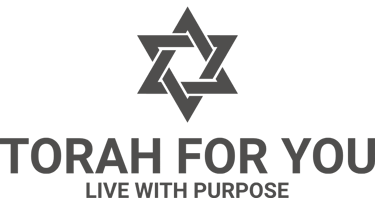LAG BA'OMER
UNDERSTANDING THE HOLIDAY AND ITS CUSTOMS
RABBI DAVID BASSOUS
4/23/20233 min read
Lag Ba'omer Customs and Reasons for Celebration
The generally accepted practice is to treat Lag Ba'omer - the thirty-third day of the Omer as a day of celebration (Rema and Darchei Moshe Chapter 493, quoting Maharil) because:
On Lag Ba’omer the talmidim of Rebbi Akiva stopped dying. (Mishna Brurah 493:MB8)
It is the yahrzeit of Rav Shimon bar Yochai, the author of the Zohar (Birkei Yosef; Chaye Odam, Klal 131:11; Aruch HaShulchan, Sedei Chemed, Kaf Hachaim).
On the day of his passing Rav Shimon bar Yochai's home was filled with a spiritual fire because before his death Rabbi Shimon revealed the Zohar - many secrets of Torah and Kabbala, which are compared to fire, and his coffin was surrounded by this spiritual fire. It is thus customary to light bonfires on Lag Ba’omer to symbolize the impact of his teachings. In Meron, the burial place of Rabbi Shimon bar Yochai and his son, Rabbi Elazar, hundreds of thousands of Jews gather throughout the night and day to celebrate with bonfires, torches, song and feasting.
The Bnei Yissaschar cites another reason for the lighting of bonfires. On the day of his death, Rabbi Shimon Bar Yochai said, "Now it is my desire to reveal secrets... The day will not go to its place like any other, for this entire day stands within my domain..." Daylight was miraculously extended until Rabbi Shimon had completed his final teaching and died. This symbolized that all light is subservient to spiritual light, and particularly to the primeval light contained within the mystical teachings of the Torah. As such, the custom of lighting fires symbolizes this revelation of powerful light.
Some have the custom to throw clothing into the bonfires to commemorate Rabbi Shimon’s stature of piety and holiness which resembled that of Adam before the sin, when he did not need clothing.
It is also a custom to visit Rabbi Shimon’s gravesite on Mount Meron in Northern Israel, and to study Torah and passages from the Zohar at the site.
It is documented that the Arizal would visit Meron with his students on Lag Ba’omer, and that they would bring their three-year-old sons to give them their first haircut at the holy site. This became a widespread custom today.
Why do we commemorate the death of a righteous person through festive celebration. One of the reasons given for this is that Halacha does not generally follow Rabbi Shimon’s rulings in the Talmud only under extenuating circumstances. Similarly, as a rule, when there is a conflict between the Zohar (which was authored by Rabbi Shimon) and the Talmud, we follow the Talmud. In the heavens, however, Rabbi Shimon’s rulings – both in the Talmud and in the Zohar – are accepted as authoritative. Therefore, in a sense, Rabbi Shimon’s death was a joyous occasion for him, as he entered the heavenly realm where his rulings were accepted, as opposed to the earthly realm, where his opinions were not followed.
Lag ba'Omer is the day on which Rabbi Shimon bar Yochai and his son Rabbi Elazar were able to leave the cave in which he had been hiding for 13 years (Aruch HaShulchan).
Another custom at the tomb of Rabbi Shimon bar Yochai is the giving of chai rotel (Hebrew: ח״י רוטל). The Hebrew letters chet and yod are the gematria (numerical equivalent) of 18. Rotel is a liquid measure of about 3 liters. Thus, 18 rotels equals 54 liters or about 13 gallons. It is popularly believed that if one donates this amount of liquid refreshment (grape juice, wine, soda or even water) to those attending the celebrations at bar Yochai's tomb on Lag BaOmer, then the giver will be granted miraculous salvation. According to Taamei Minhagim, many childless couples found success with this segula (propitious practice). This practice was also endorsed by Rabbi Ovadia miBartenura and the Shelah HaKadosh.
Historically, children across Israel used to go out and play with bows and arrows, reflecting the Midrashic statement that the rainbow (the sign of God's promise to never again destroy the earth with a flood Gen 9:11-13) was not seen during Rabbi Shimon bar Yochai's lifetime, as his merit protected the world.
It was the day that Rabbi Akiva granted semichah to his five surviving disciples and through whom Torah was disseminated, among them Rabbi Shimon Bar Yochai. (Kaf HaChayim 493:26 Sedei Chemed, Chida, Kaf Hachaim, Pri Chadash).
In some circles it is customary to eat carobs on Lag BaOmer. For a period of thirteen years, Rabbi Shimon and his son were fugitives from the Roman regime, hiding in a cave in northern Israel. Miraculously, a carob tree grew at the entrance of the cave, providing nourishment for its two holy occupants.
It was the first day that the mann began falling for the Jews in the desert (Shu”t Chatam Sofer, Yoreh Deah #233 s.v. amnam yodati).
On Lag Ba'Omer, it is believed by some, Bar Kochba's army re-conquered Jerusalem, for four years Jewish independence was restored.
